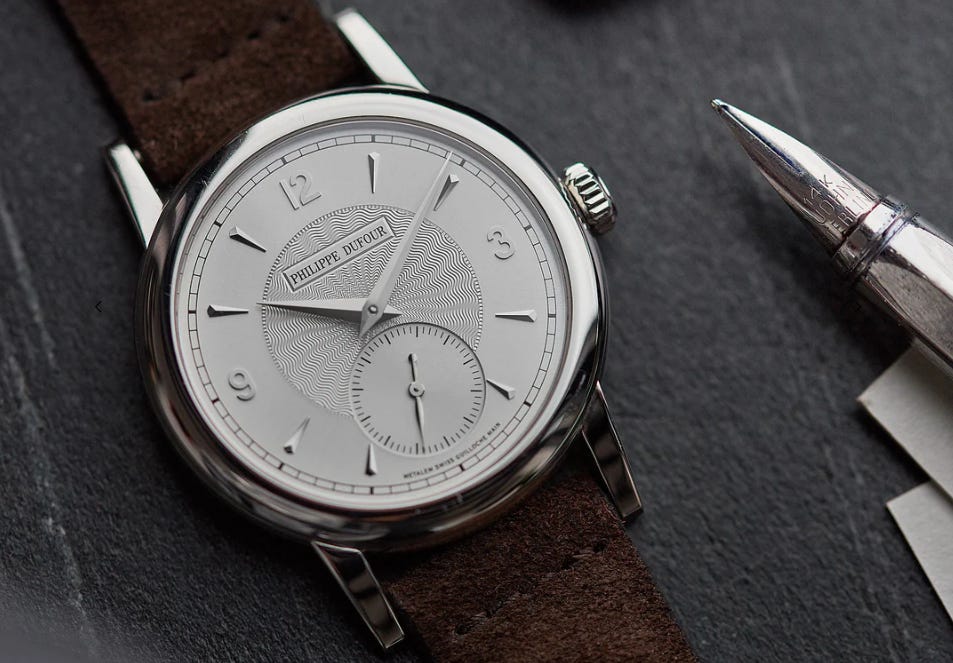Perfect Replicas & Status Games
Lessons from Rudy Kurniawan: "...the biggest and most successful wine counterfeiter in the world."
I am supposed to be packing for my trip to Dubai this evening, but I somehow found myself reading this article instead… and kinda fell down the Rudy Kurniawan rabbit hole (again). If you haven’t watched the documentary Sour Grapes, you should do so immediately (see trailer below).
This documentary is about a baby-faced Indonesian bloke who sold tens of millions of dollars worth of fake wines to Hollywood producers and billionaires, and the show explains how he was doing things like mixing California Pinot Noir in his mum’s kitchen to recreate bottles of 1945 Romanée-Conti.
Following the social status discussion in the most recent SDC Weekly, I had a fun exchange with a subscriber in the comments section, and decided another quick post on the subject was worth sharing. Thanks for the inspiration,
!Estimated reading time: ~ 9 minutes
Rudy got deported back to Asia in 2020 and instead of disappearing into obscurity, he’s apparently thriving as what the article labels an ‘outlaw celebrity‘. Wealthy collectors in Asia are apparently hiring this guy to recreate impossibly rare wines i.e. the very thing that landed him in prison! In other words, they actively want his cheap blends which purportedly taste identical to $10,000 bottles1.
The reaction from the establishment was, as you’d expect, pure rage. To quote Rudy’s lawyer:
“These wine snobs are offended by the fact that Rudy can do this. They are threatened by the concept that he can bring taste to a concept that they thought was only for them — like duplicating their $10,000 bottles for perhaps as little as a hundred bucks. Messing with very rich people’s hobby put Rudy in jail. Now he is using his skill in a way that will be beneficial for a larger segment of people in the wine market.”
Rudy’s crime was more than just the original deception, it seems. The worse offence, was making the inaccessible accessible, and proving that the emperor’s exclusive vintage was basically not exclusive at all, thanks to some clever chemistry.
—
Wine (and I suppose ‘taste’ in general) is just a series of chemical compounds which trigger your taste receptors in a particular way, and these send signals to your brain about how you experience or ‘taste’ the stuff in your mouth. Rudy proved that if you can reverse-engineer the formula, you can recreate an identical experience. Sure, you lose the provenance and story, but the liquid hitting your tongue can be identical, or close enough that it is indistinguishable.
When it comes to watches, it’s a little different; steel is steel, and gold is gold. A balance spring oscillating at 2 Hz does exactly what it does regardless of who assembled it. When someone like Philippe Dufour makes a Simplicity, and some hypothetical master watchmaker with identical skills makes something “materially indistinguishable”, what actually separates them? In reality, nothing material separates them at all.
For the sake of argument, assume that someone was able to make a Dufour Simplicity which used the same materials, had the same finishing quality, and was perhaps indistinguishable from an original version of the same watch made by the man himself. And let’s say this watch was gifted to you by some rich guy, and you wear what you believe is a genuine Simplicity for a couple of years.
You have no idea this isn’t made by Dufour, and you wear it to auctions, watch gatherings, and you even passed it around at a dinner where there were several other Simplicity pieces where everyone believed it was authentic. Then one day, you meet someone who also owns a Simplicity, and the serial number on your watches are identical. You’re both very alarmed, and send the watches to Dufour himself, hoping he can explain this situation.



